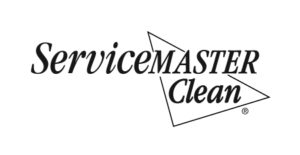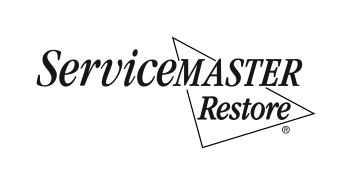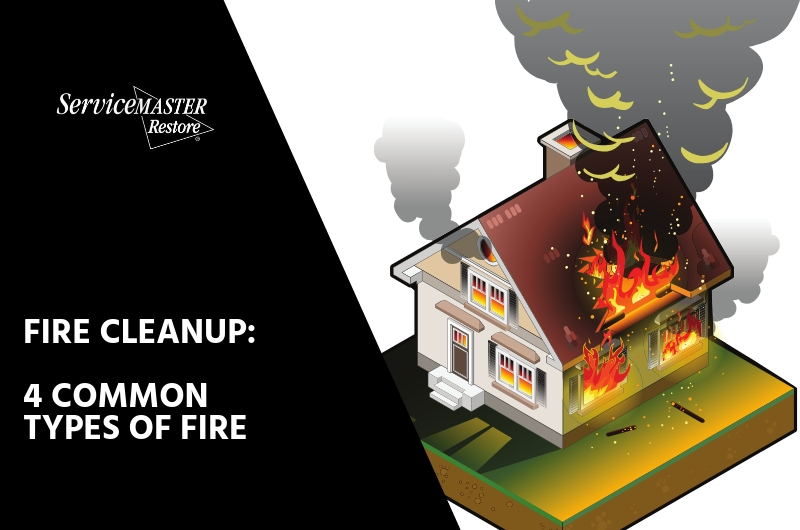A fire is one of the most severe losses that a homeowner or renter can experience. After the initial shock and assessment, the fire cleanup process should begin as soon as possible.
Fire damage professionals coordinate with the fire department to determine the types of fire. Each fire has different properties that cause unique problems and damage. Here are the four most common types of fire to be aware of.
Protein Fire – when you’ve burned something on the stove or in the oven, the strong odor and heavy smoke can have long-lasting effects throughout the house. Smoke from a kitchen fire also contains grease particles that float to other surfaces.
Complex Fire – this happens when multiple types of surfaces and items have burned, causing various types of soot damage and surface corrosion. Careful cleanup is needed to prevent further permanent damage.
Malfunction – furnaces can leave residual smoke and small particles throughout the house when they malfunction. Dust and lint can build up, or a blocked filter can prevent proper airflow, causing complete breakdown, overheating, or explosion.
Natural Fire – a nearby fire outdoors still permeates the interior of the building, bringing with it strong odors, ash and soot.
After a home fire, one of the initial steps is the safety assessment and airing-out of the building. Before repairs can begin, belongings need to be assessed for damage and properly cleaned if they are salvageable.
Each type of fire requires special cleanup methods. Here are some fire disaster cleanup tips to be aware of.
Walking through the house will stir up the soot and debris, causing it to travel to areas that were not affected by the fire. So, cleanup may be required throughout the entire home, not just the room where the fire occurred.
Touching walls and surfaces without proper protection can cause further damage, as skin oils mix with the soot particles to penetrate the surface.
Soot residue can become worse if the walls are not cleaned properly. Washing the walls with ordinary household cleaner will usually smear the soot. And, marble countertops, hardwood floors and tiling can become permanently scratched from the soot and smoke particles if not cleaned properly.
Soft items such as carpeting, upholstery, curtains and bedding need thorough washing or dry cleaning, often requiring an odor neutralizer.
Changing the filters on the furnace and applying cheesecloth on air returns will help trap airborne particles so they don’t spread throughout the house. These may need to be replaced several times during the fire cleanup process.
Firefighters use a lot of water to extinguish the flames, which will soak into flooring, walls, furniture, and other items. Saturated woodwork needs immediate treatment and cleaning to prevent warping and further damage.
Water that has saturated porous materials can also cause the growth of mold and mildew, which pose longer-lasting dangers. Floors and walls need to be tested with a moisture reader to determine the extent and location of hidden moisture. Specific cleanup methods are needed to ensure the mold doesn’t spread, and that it is completely removed.
No matter what type of fire you have experienced, there are precautions to follow for safe fire cleanup. The right equipment and methods can make a difference. A skilled fire disaster team can also make the process a lot faster. Call ServiceMaster by the Border when you are faced with this situation; they will help make fire cleanup easier, so you can get your life back in order.


